Recent Posts
Flooding Happens in the Blink of an Eye
5/24/2024 (Permalink)
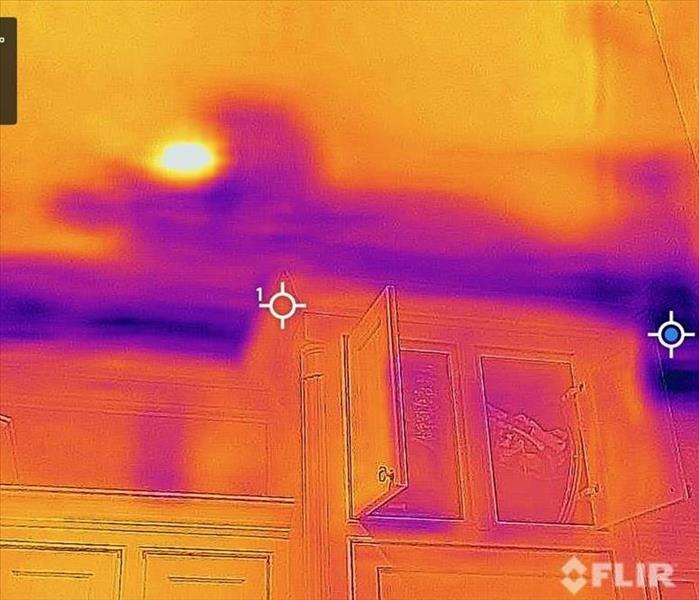 Thermal image of wet ceiling and cabinets following an upstairs toilet leak. Purple indicates moisture evaporating from drywall.
Thermal image of wet ceiling and cabinets following an upstairs toilet leak. Purple indicates moisture evaporating from drywall.
Residential leaks and floods can be catastrophic, but quick intervention is key to reducing potential damage:
Depending on the source of the leak, water can fill your space quickly or slowly creep along undetected, saturating everything it encounters.
Water always flows along the “path of least resistance”, which means it can seep into walls, floors, furnishings, and personal items.
Within the First Day of being wet:
- Drywall starts to swell and deteriorate.
- Metal surfaces start to tarnish.
- Furniture begins to swell and develop cracks.
- Dyes and inks from textiles and paper products spread, causing staining.
- An unmistakable musty odor starts to emanate.
48 Hours to One Week:
- Mold and mildew may start to flourish and spread.
- Doors, windows, and structural components may begin to swell and warp.
- Metal surfaces may start to rust and corrode.
- Furniture warps and shows signs of mold growth.
- Paint may begin to bubble and peel.
- Wood flooring may swell and buckle.
- There's a risk of serious biohazard contamination.
Beyond One Week:
- The time and expense of restoration increase significantly; replacing contaminated materials and extensive structural repairs may be necessary.
- Occupant safety is jeopardized due to structural instability, possible proliferation of mold, and other potential biohazards.
How to Prepare for Spring Storms
5/7/2024 (Permalink)
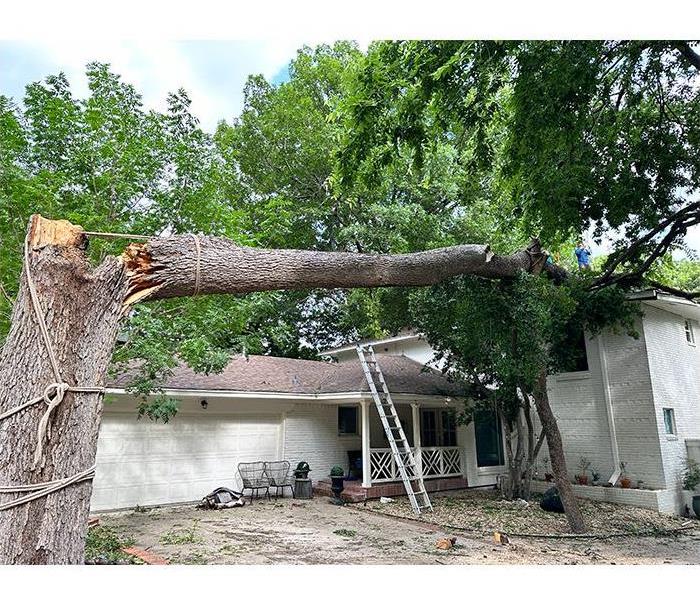 SERVPRO of Northeast Dallas was called in to remove this tree from a home in Lakewood. We repaired the roof and the interior of the home.
SERVPRO of Northeast Dallas was called in to remove this tree from a home in Lakewood. We repaired the roof and the interior of the home.
Spring in Dallas, Texas is a fantastic time for outdoor fun with loved ones, but it also brings the potential for severe storms that can wreak havoc on your home. To help you safeguard your property, we've compiled some essential tips for preparing your home for storms and handling water damage mitigation if needed.
Preparing Your Home for Summer Storms
Roof Inspection: It's crucial to ensure your roof is in top condition to withstand the elements. Schedule a professional inspection to identify any damage or signs of wear and tear. Prompt repairs can prevent water damage during storms.
Gutter Maintenance: Keep your gutters clear to prevent water from overflowing and seeping into your home. Regularly clean gutters and downspouts to avoid potential water damage.
Tree and Shrub Maintenance: Trim back any overhanging branches that could pose a threat to your home during high winds or lightning storms. This proactive measure can prevent significant damage caused by falling branches.
Secure Outdoor Furniture: Strong winds have the potential to toss around or damage outdoor furniture. Secure or store items properly to prevent them from becoming projectiles during storms.
What to Do If You Need Water Mitigation from Water Damage
Contact a Professional: In the event of water damage, it's crucial to enlist the expertise of a professional water mitigation company like SERVPRO of Northeast Dallas. We possess the necessary equipment and skills to swiftly and effectively address the damage.
Assess the Damage: Upon arrival, the water mitigation team will assess the extent of the damage and devise a comprehensive plan for remediation.
Initiate Mitigation: The mitigation process will commence, involving tasks such as water extraction, drying, and dehumidification to prevent further damage and mold growth.
Restoration: Once mitigation is complete, the restoration phase begins. This may entail repairing damaged areas, replacing materials, and restoring your home to its pre-damaged state.
While summer storms can pose a threat to your home, taking proactive steps and seeking professional assistance when needed can help minimize the impact of water damage. If you find yourself facing water damage, don't hesitate to reach out to a trusted water mitigation company like SERVPRO of Northeast Dallas for prompt and effective assistance.
Does the Source of Flood Water Matter?
5/7/2024 (Permalink)
 Wall damaged by broken toilet supply line. The source was clean water, so it was determined to be Category I.
Wall damaged by broken toilet supply line. The source was clean water, so it was determined to be Category I.
Flooding wreaks havoc on homes and commercial properties, leaving behind a trail of destruction that's often difficult to fully anticipate.
The initial step in mitigating water and storm-related damages is water extraction, but that's only the beginning of the comprehensive restoration process undertaken by the restoration professionals from SERVPRO of Northeast Dallas. Given the inherent dangers of flooding, it's crucial to enlist the expertise of a reputable property damage restoration company like ours, specializing in natural disaster and flood cleanup and remediation.
For property owners or management teams, determining whether contaminated areas and contents have been effectively remediated can be challenging, necessitating professional intervention to prevent ongoing damage from potential mold growth. Our restoration technicians, equipped with IICRC training and certification and extensive experience in local property damage cleanups and repairs, assess the damage meticulously.
During the assessment process, SERVPRO of Northeast Dallas identifies which aspects of the loss can be cleaned, sanitized, and restored, collaborating seamlessly with our construction crews and management to facilitate a smooth transition from mitigation to reconstruction. Thus, entrusting the restoration process to a local property disaster restoration company like ours ensures comprehensive and efficient damage reversal.
When it comes to contaminated water, understanding the different categories is crucial:
Category 1: Originating from an uncontaminated source of clean water, such as a broken water supply line or a leaking hot water heater, Category 1 water poses minimal risk initially but may become contaminated upon contact with other surfaces or materials. We always attempt to dry surfaces as quickly as possible to prevent additional damage and avoid the need for demolition.
Category 2: Often called "gray water", it carries slight contamination that can cause discomfort or illness if consumed or contacted by humans. One example would be water that leaks from a dishwasher drain line. This type of water may contain unsafe levels of microorganisms, nutrients, or other organic or inorganic matter. Depending on the situation, some surfaces can be disinfected, cleaned, and dried, while others will need to be removed.
Category 3: Known as "black water", it is highly contaminated and harbors pathogenic, toxigenic, or otherwise harmful agents. This category includes sewage backups, ground water, or surfaces that have remained wet for over five days. Dealing with black water requires professional expertise due to its hazardous nature. Most surfaces that come into contact with Category 3/Black Water must be removed.
Different categories of contaminated water present varying risks, but prolonged exposure exacerbates property damage and health hazards.
If you are dealing with any type of flood, contact SERVPRO of Northeast Dallas as soon as possible.
What to do After a Flood
12/12/2022 (Permalink)
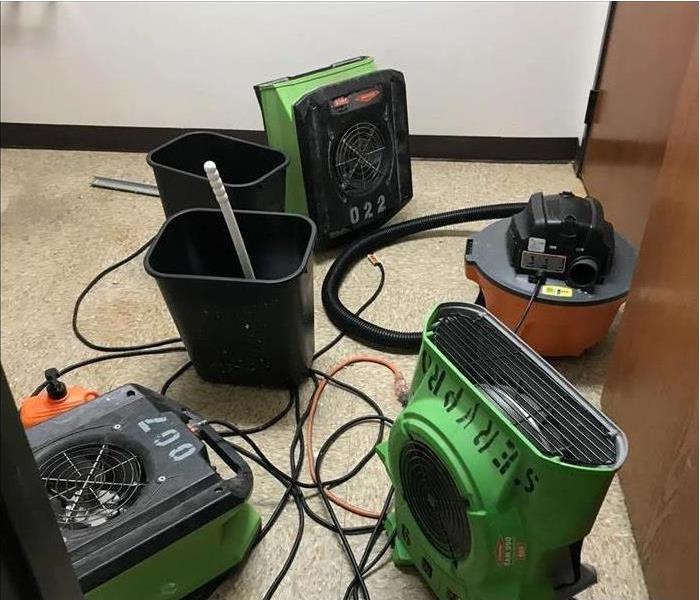 Water clean up after a storm in Hamilton Park, TX
Water clean up after a storm in Hamilton Park, TX
Post- Flood Clean Up
After a flood, your home can be damaged in several ways. You may find that the water has seeped into your walls and floors or even caused mold to grow. There are things you can do on your own and those that need to be handled by professionals. Below we’ll cover what is involved with post-flood clean up, as well as tips on getting started on the right track:
Call Restoration Professionals To Extract Standing Water
After a flood, standing water can quickly cause extensive damage to your home. You may need to extract the water before it has a chance to cause more problems. Your restoration company will be able to help with this process.
Water can lead to mold growth, which is expensive to eradicate. Getting the water out of your home as soon as possible is essential for minimizing future damage from poor air quality and any potential illnesses that may arise from prolonged exposure of water-damaged materials in your home.
Stay away from electronics
- Do not use electronics until they have been inspected by a professional.
- Do not use electronics until they have been dried out in a safe, dry environment (like a bag of rice).
- Do not use electronics until you are sure that they are safe and/or how to use them again.
Don’t attempt to fix yourself
You may be tempted to try to fix things yourself. Don't. Do not turn on the power, and do not attempt to repair any damaged appliances or furniture yourself. The electrical system could have been damaged by flood waters, so it's best to leave it untouched until you can get an electrician out there. Similarly, water damage can cause mold and mildew problems that are best left up to professionals—even if they're only minor issues at first glance.
Return home when it’s safe
After a flood, it can be difficult to know when it is safe to return home. You might feel like you're taking a risk by returning too soon and end up with more damage than if you'd waited longer. However, after being evacuated for several days or even weeks, there's a good chance that your home needs your personal touch now more than ever—especially if you've been away from your pets or plants for long periods of time.
For us to advise on when it is safe for you to return home after a flood, we need some information first:
- Where did the flooding occur?
- Was it in an area where there were severe weather warnings?
- If so, this could mean that the torrential rains caused erosion along rivers and streams nearby, thus making the ground unstable enough so as not to withstand heavy traffic (i.e., cars).
If you experience a flood, there is no need to panic. You can follow these tips to get your Hamilton Park, TX home back to normal as quickly as possible. It’s important that you act quickly and call professionals if needed.
What Leads to Flooding in Basements?
11/8/2022 (Permalink)
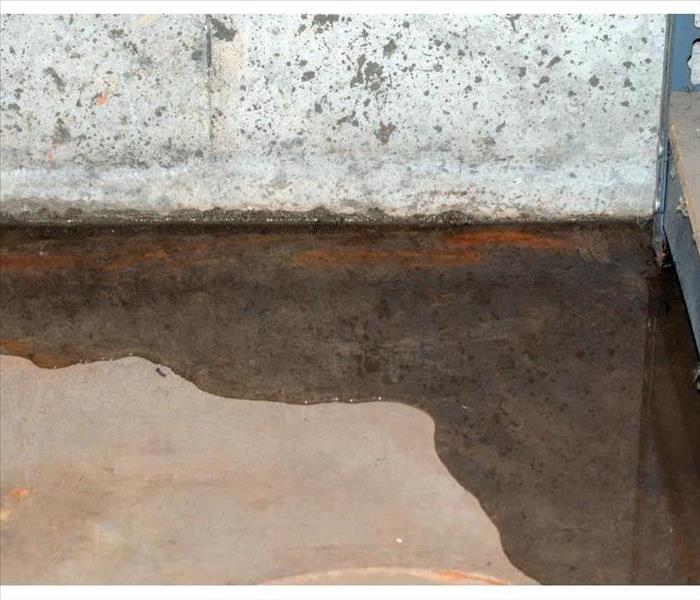 Foundation cracks can allow water to seep into your basement.
Foundation cracks can allow water to seep into your basement.
What Causes Basement Flooding?
There are many reasons why your basement may be flooded. The good news is that most of these issues can be prevented by checking and maintaining the areas around your home. The following are some of the most common causes for flooding in basements.
1. Plumbing leaks
A plumbing leak could result from any of the following:
- A cracked pipe
- Leaking faucet or fixture
- Broken valve
2. Foundation cracks
Foundation cracks can allow water to seep into your basement. To check for foundation cracks, look at the floor joists that support your home's walls. If you see any cracked or bowed areas, these may be signs of a problem.
To fix this issue, call in a professional who will use either wood or dry-set concrete blocks to restore the support system underneath your home. This will prevent further damage from occurring and keep any water from seeping into your basement in the future.
3. Sewage backups
Sewage backups are a common problem in basements. When your home's pipes and drains become clogged, sewage can back up into the basement, causing serious damage to your property. Sewage backups occur when water remains stagnant in a drain or sewer line for too long. This happens most often when leaves and other debris block the pipe, preventing waste from being properly disposed of. If you notice any of these signs—a strange smell coming from your drainage system, standing water in the bottom of your sink or toilet bowl—it may be time to check for leaks or clogs before it becomes an emergency:
Once it's safe to enter the area where backup occurred (always wear protective gear such as rubber gloves when handling wastewater), place clean towels around affected areas to absorb excess moisture before attempting any cleanup efforts by hand with paper towels or rags that can later be thrown away immediately outside (never through drains). Be sure not touch anything unless wearing protective clothing as well as washing hands thoroughly after contact with any potentially harmful substances like mold spores.
4. Clogged gutters
Gutter systems are an important part of the foundation, and they can be a great first line of defense against water damage. However, if you don't keep your gutters clean, clogging will occur. This is more likely to happen if there are leaves or other debris in the gutter system that prevent water from flowing freely through it. When this happens, water may back up and seep into your basement.
5. Flooded yard
Sump pumps are an important part of flood prevention. They help get rid of excess water in the yard, preventing it from entering your basement through cracks in the foundation. Sump pumps can be installed in a pit or sump basin, which is essentially just a hole dug into the ground with a pump on top of it. The pump should have its own dedicated power source and be connected to PVC piping that leads to an overflow drain outside of your house.
There are some things you can do to prevent basement flooding. Make sure that you check your plumbing regularly for leaks and try not to overload your drains with too much water. If there is ever a sewage backup, call a professional immediately before the problem gets worse. You should also have your yard inspected regularly by a professional landscaper who will help identify any potential problems before they become serious enough that they cause flooding in your Northeast Dallas, TX home.
Why Shouldn’t You Clean Puffback Soot Yourself?
10/11/2022 (Permalink)
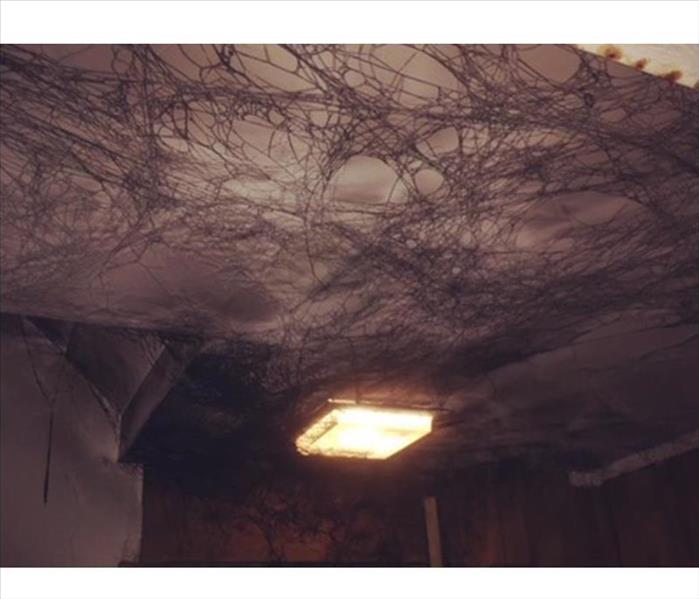 Don't try to clean puffback soot yourself.
Don't try to clean puffback soot yourself.
Why Shouldn't You Clean Your Own Puffback Soot?
A furnace puffback is a term that refers to smoke coming out of your furnace. This can be caused by a number of things, but it’s important to know the right steps to take in order to restore your property back to normal. A professional restoration company will have the tools and skillset needed in order clean up this mess and prevent further damage from occurring.
The problem with a furnace puffback can be very messy and confusing.
A furnace puffback occurs when there is a build-up of soot in the exhaust flue and ducts. The problem with a furnace puffback can be very messy and confusing. If you want to avoid cleaning your furnace yourself, here are some reasons why:
- You risk getting burned from hot metal surfaces.
- You may not have the right tools needed to clean out your ductwork properly.
- You may not be able to access all areas that need cleaning because it's located in tight spaces or behind walls.
Steps to restore your property back to normal
If this happens, it’s important to know the right steps to take in order to restore your property back to normal.
- Call a professional restoration company. If you are unsure of what type of service you need, ask your insurance agent or contact us at (214) 343-3973.
- We will be happy to help figure out what type of cleaning is needed and provide an estimate on how much it will cost.
- Turn off the fuel supply. It’s very important not to turn on any electricity if you have suffered a fire because there could still be live wires that could cause an electrical shock or worse electrocution if touched during cleanup efforts.
- Clean up any soot from walls, floors, and furniture with water only (no detergents). We also recommend wiping down all surfaces with either warm water or rubbing alcohol after vacuuming up as much soot as possible using a shop vac at low-speed setting (high speed may scatter more dust).
- Remove damaged items from rooms if safe for removal, otherwise cover them with plastic while they are cleaned by professionals later in process.
If you have an oil furnace puffback, turn off the fuel supply as well. This will allow a professional to clean up the mess and restore your property.
Next, call a professional restoration company.
If you have a puffback soot problem, you shouldn't attempt to clean it yourself.
- Do not use a vacuum cleaner or shop vac. These will spread the soot and make the situation worse.
- Do not use water or cleaning solutions of any kind, even if they are labeled "odorless." They may not be as strong as other cleaners but can still leave behind residue that will cause future problems for your home.
- Likewise, don't use a blow dryer or fire extinguisher to try to get rid of puffback soot on your walls and ceilings—these items can damage what they're used on!
If you have any questions about your puffback situation, don’t hesitate to contact us. We can help!
3 Roof Repair Troubleshooting Tips
8/27/2022 (Permalink)
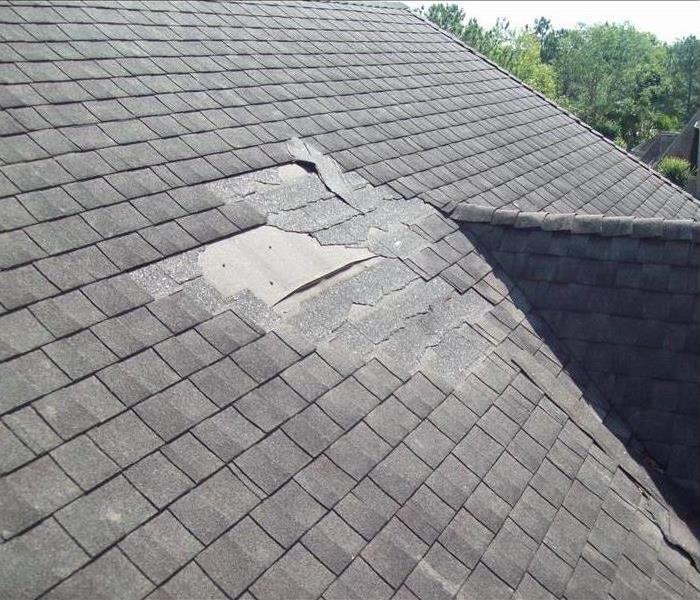 Roof damaged by wind
Roof damaged by wind
Three Types of Roof Damage You Could Be Dealing With
Whether you live on a beach with hurricanes or on a mountain with heavy winter snowstorms, your home can be at risk of sustaining wind damage. Because the roof is one of the most common places for it to happen, it is helpful to know how to quickly respond to problems there. Sometimes, you will need to call a storm damage remediation expert for help, but other times, you can fix things yourself. Here are three tips for recognizing the type of roof damage you are dealing with:
1. Check the Flashing
It is common for high winds to damage roof flashing in Wilshire Heights, TX. This is the material that protects the seams of roof fixtures such as your chimney. While you are checking the flashing, do not forget about the surrounding sealant. If it is old or cracked, you will need to replace it. Fortunately, this is an inexpensive kind of roof repair.
2. Look for Damaged Parts
A roof has several parts including vent boots, shingles and slits. Take time to carefully examine all of them. Damaged vent boots can lead to leaks, and it is easy for shingles to break and for slits to corrode. If any of this kind of roof damage occurs, you will need to buy replacement materials. This sort of roof repair can be more costly than flashing or sealant fixes, but it probably still will not break the bank.
3. Check for Holes
A puncture is one of the most expensive types of roof repairs you will encounter. If you notice a hole in your roof, moving quickly can save you money by reducing the amount of additional damage that may occur. Holes are not the kind of repair you want to make yourself though. Even if it can be costly, is better to leave this job to professionals.
If high winds damage your roof, it can be helpful to know what kind of roof repair you will need to make. Depending on the extent of the damage, you may be able to solve the problem yourself, or you made need professional assistance. Either way, acting quickly can reduce problems.
How To Know Whether You Have a Shower Leak
8/27/2022 (Permalink)
 Shower leak
Shower leak
How to Determine If Your Shower Is Leaking
A bathtub leak can quickly damage the floors and walls of your Vickery Meadows, TX, home. You thus need to regularly inspect your shower and bathtub for signs of damage. Otherwise, your house may sustain extensive flooding that necessitates water damage remediation experts.
Shower pans are particularly problematic. A shower pan leak can manifest itself in many ways. Damage to any of the below areas may be evidence of this type of leak:
- Above living rooms
- Above slabs
- Over the crawlspace
Understanding Shower Pans
The shower pan is a liner between the sub-floor and the tile. It is typically made of plastic. Poorly installed shower pans may leak right away. Pans that are at least 30 years old may cause problems, as well.
Identifying Shower Leaks
A shower or bathtub leak often appears in the drain area first. This should thus be the first place you check during your inspection.
Next, look at the crawlspace. If you notice soggy wood or dripping white stalactites, you may have a leak in the shower pan.
You should also inspect any nearby wood trims or baseboards for possible water stains. Closets backed up to the shower must be checked, as well.
As you inspect the closet, remove any items stored against the wall alongside the shower. Wet carpeting inside the closet is another potential warning sign. Finally, if the shower is on an upper floor, look for water stains on the ceiling below the bathroom.
While the pan is the most difficult part of the shower to replace, it is not the only potential source of leaks. Be sure to check all the components regularly for any signs of excess water.
Of course, identifying a shower or bathtub leak is just part of the process. Once you determine that the leak exists, have a plumber fix the problem right away. Paying for this minor plumbing expense now will save you money on extensive restoration in the long run.
3 Ways to Prevent Mold Growth in Your Commercial Building
8/12/2022 (Permalink)
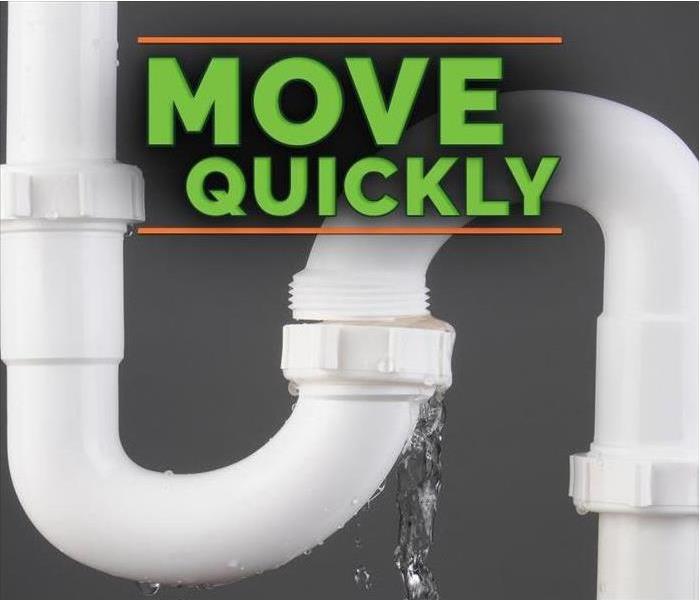 Fix leaks right away
Fix leaks right away
Prevent Fungus From Growing Or Returning
Mold is a fungus that grows easily in moist environments. It can spread quickly via spores that travel through the air or on shoes and clothing. Black mold is one variety that you may find in your Urban Reserve, TX, building. The following are some ways that you can prevent the fungus from growing or returning if it has previously been removed.
1. Fix Leaks Right Away
Even small leaks can create the environment needed for black mold to grow. Whether it is from a pipe, plumbing fixture, or appliance, any leak should be repaired as soon as possible. Do not put it off just because it seems less urgent, particularly if you have had trouble with mold in the past.
2. Prepare For Storms
Water damage from a storm can create many problems, including mold growth. One way to limit this is to prepare for severe weather ahead of time. Keep your building maintained to reduce the amount of water that makes its way inside. A cleanup and restoration company can help remove storm damage before a large black mold infestation forms.
3. Manage Moisture in the Environment
Along with water damage, mold growth can also occur as a result of a moisture problem. In some cases, this can be because of humid weather. Other times, steam from a kitchen or bathroom can create an issue. One way to keep moisture in the building at a lower level is to use a dehumidifier to remove moisture from the air. If possible, you may also want to keep some windows open or use exhaust fans to keep moisture at bay.
Mold cleanup and removal is often more difficult than mold prevention. Taking steps to keep mold from forming in your building will reduce the chances that you will have to deal with this pesky fungus. Proper maintenance is even more important if you have had trouble with mold in the past, as it is more likely to return in areas with previous growth.
Tips on Preparing a Small Business for a Winter Storm
7/29/2022 (Permalink)
 Create a business continuity plan
Create a business continuity plan
If you own a business in a northern state, you need to prepare for the inevitable snow storm. Closing the business means lost revenues so you want to keep it running if possible, but you also want to ensure that your employees stay safe. It is important to have a plan in place so that when bad weather arrives you and your workers are prepared.
Winterize Your Building in Advance
Before winter arrives, prepare your building for the cold weather.
- Drain the water from the underground sprinkling system.
- Inspect the roof of the building for any damage and repair any issues.
- Remove dirt and debris from rain gutters and roof drains.
- Trim all trees around the building so that branches can’t fall on the building if they become loaded with ice or snow.
- Seal any gaps on the exterior of the building.
- Plan ahead for snow removal services for the parking lot and make sure you have plenty of ice melt or sand on hand to keep walkways free of ice.
Create a Business Continuity Plan
Identify any potential risks to your business, including those risks pertaining to a snow storm. Such issues as a pipe burst due to frozen pipes or loss of heat and electricity must be identified.
Evaluate the costs involved with each risk, such as business interruptions or damage to the property.
Evaluate the ways in which your team will be able to mitigate each risk. Investing in a generator, for example, can protect the business from costly repairs.
Develop a Communication Plan
If you need to shut down operations, you must have a plan for contacting employees, vendors, and contractors. Keep a current listing of phone numbers and email addresses and devise an alert system for notification. Make sure you train your employees on all emergency procedures.
Snow storms can’t be avoided if you live in Vickery Meadows, TX, but being prepared will help to protect your employees and your business.
 Thermal image of wet ceiling and cabinets following an upstairs toilet leak. Purple indicates moisture evaporating from drywall.
Thermal image of wet ceiling and cabinets following an upstairs toilet leak. Purple indicates moisture evaporating from drywall.

 24/7 Emergency Service
24/7 Emergency Service








